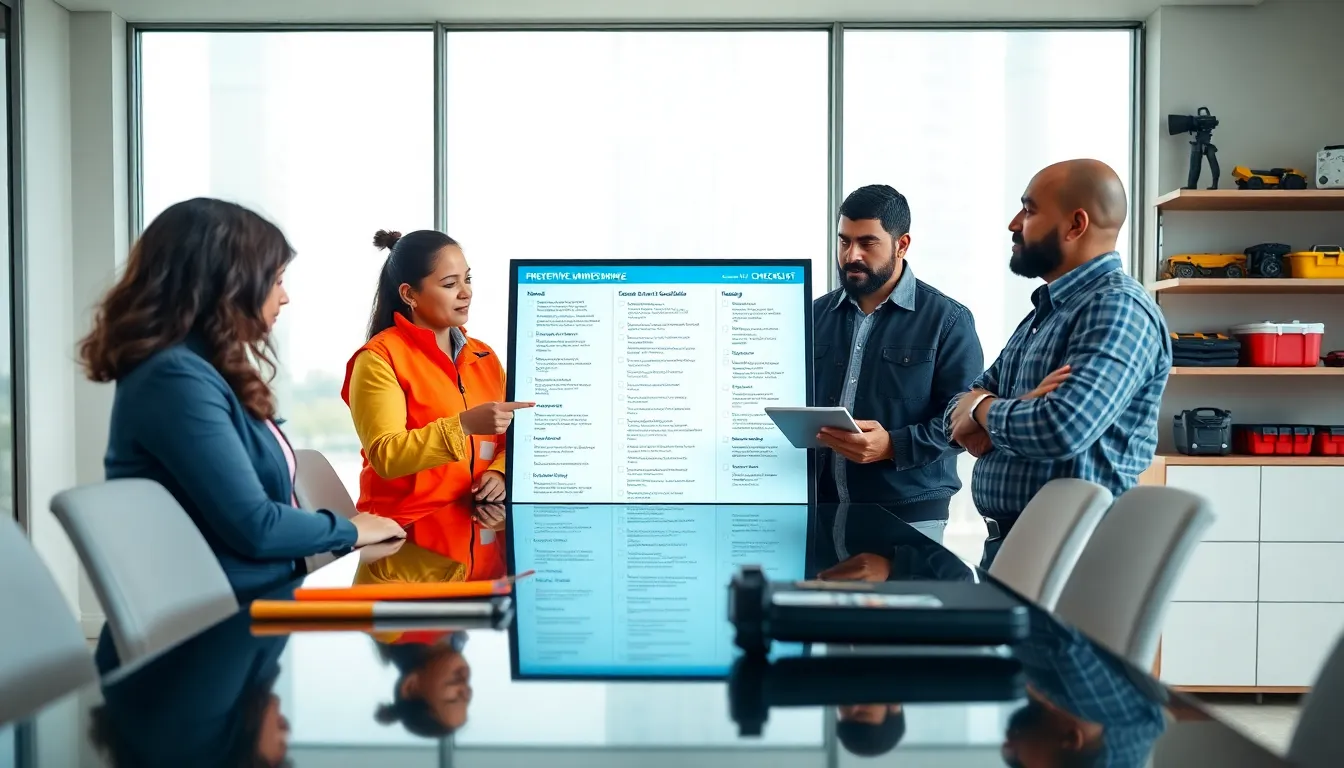Have you ever wondered what keeps the wheels of industry turning smoothly? Spoiler alert: it’s preventive maintenance checklists. Think of them as your trusty sidekick, ensuring equipment runs longer and problems are caught before they snowball. Let’s face it: no one wants to find themselves in a panic when a machine breaks down unexpectedly. So grab a coffee, sit tight, and explore how preventive maintenance checklists can be the lifesaver your organization didn’t know it needed.
Table of Contents
ToggleImportance Of Preventive Maintenance Checklists

Preventive maintenance checklists play a crucial role in maintaining the longevity and efficiency of equipment and systems. This proactive approach prevents costly repairs and downtime, making companies more productive and less stressed. Regular checklists ensure that maintenance actions aren’t put off until it’s too late, so minimizing the risk of unexpected failures.
Also, these checklists help streamline the workflow for maintenance teams. Each member knows exactly what needs to be checked and when. This structured approach not only fosters accountability but also encourages a safety-first mindset. After all, a well-maintained workplace is a safe workplace.
Key Components Of A Preventive Maintenance Checklist
Creating an effective preventive maintenance checklist involves several key components:
- Equipment Identification: Start by clearly identifying each piece of equipment. This includes making note of serial numbers and specific models.
- Maintenance Tasks: List specific tasks that need to be performed, like lubricating parts, checking fluid levels, and inspecting safety devices.
- Frequency of Maintenance: Specify how often each task should be performed. Daily, weekly, monthly, whatever suits your operational needs.
- Responsibility Assignment: Who’s in charge of each task? Assigning responsibilities ensures nothing slips through the cracks.
- Documentation: Leave room for notes and observations during each maintenance check. That way, any anomalies can be recorded for future reviews.
This combination equips teams with what they truly need for effective maintenance.
Creating An Effective Preventive Maintenance Checklist
To create an effective checklist, begin at the organizational level. Gather input from team members who work with the machinery daily. Their hands-on experience can reveal potential areas of concern.
Start simple. Outline essential tasks and gradually add details as the team aligns. Collaboration is key: once you gather diverse insights, compile them into a comprehensive checklist.
Besides, consider integrating technology. Many software solutions help organizations track maintenance schedules and provide reminders for upcoming checks. This can greatly enhance compliance and streamline operations.
Finally, periodically review and update your checklist. Equipment and processes evolve, so your checklist should too.
Implementing Preventive Maintenance Checklists In Your Organization
Once the checklist is created, the next step is implementation. Roll it out in phases, starting with a training session for your maintenance team. They should understand the purpose of each item on the checklist, why it matters, and how to document findings.
Incorporate regular feedback sessions. Allow team members to voice concerns and suggest improvements to the checklist. This creates buy-in and ensures that the process evolves based on real-world use.
Documentation becomes vital at this stage. Creating a central hub where completed checklists can be stored allows for easy access during audits or performance reviews. With everything in one place, accountability and visibility increase significantly.
Common Mistakes To Avoid When Using Preventive Maintenance Checklists
Even the best-designed checklists can falter without careful attention. Here are common mistakes to avoid:
- Neglecting Updates: Checklists should evolve, but neglecting to update them based on equipment changes can lead to inefficient maintenance.
- Overloading with Tasks: Too many tasks can overwhelm staff, leading to tasks being skipped. Keep it concise and focused.
- Ignoring Training: Failing to provide training on how to use the checklist can result in inconsistencies and errors. Ensure everyone feels comfortable and supported.
- Poor Documentation: Neglecting to document findings can eliminate the value of maintenance. Make sure observation space is ample for thorough notes.
By sidestepping these common pitfalls, organizations can ensure that their preventive maintenance program runs as smoothly as possible.
Future Trends In Preventive Maintenance Checklists
The future of preventive maintenance checklists is looking bright, thanks to technology. One emerging trend is the integration of IoT devices. These smart technologies can monitor equipment in real time, sending alerts when maintenance is due or when issues arise. This proactive approach minimizes manual record-keeping and enhances efficiency.
Also, predictive analytics using AI can help organizations foresee potential failures based on historical data. By analyzing patterns, companies can proactively adjust maintenance schedules to avoid unnecessary downtime.
Finally, mobile apps are rising in popularity. These apps will allow staff to access checklists on-the-go, updating them in real-time, so enhancing communication and accessibility.



